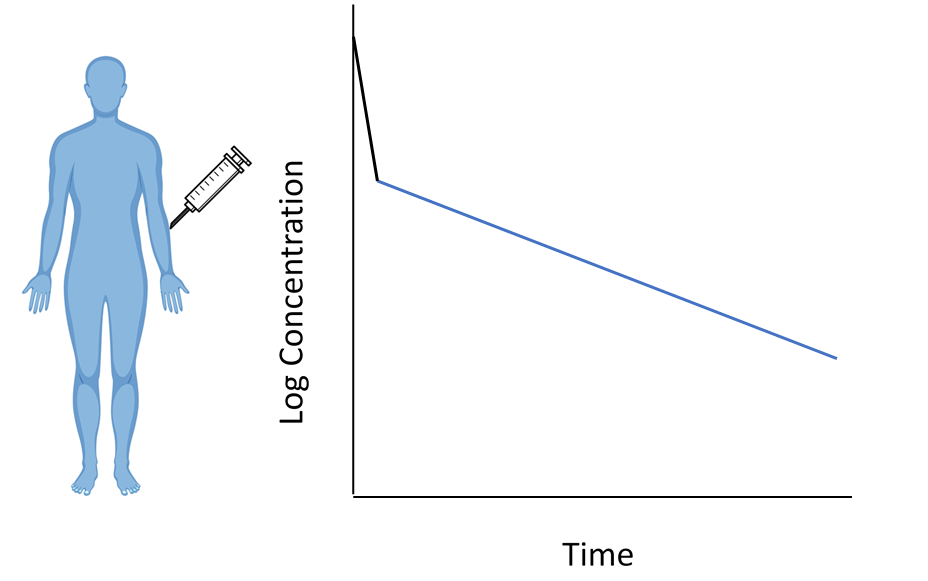Distribution
Following drug absorption from the site of administration, drug will enter the bloodstream. From the blood, drug can distribute to various tissues throughout the body. Many drugs do not distribute evenly throughout the body and may preferentially distribute to different organs or tissues. Drug distribution is usually a dynamic process and concentrations in tissues will distribute back into the systemic circulation with time.

Shallow vs Deep Compartments We might observe from concentration vs time data that following administration and reaching maximal concentration the concentration declines rapidly for a brief period. This decline can represent a group of tissues and organs in which the drug is readily distributing to. In general, we would call this a shallow compartment as drug will also leave this compartment quickly. Deep compartments take longer to remove drug from the bloodstream but also will empty at a slower rate.
Protein Binding Albumin is an abundant protein that binds with low affinity to many drugs. Drugs which exhibit high protein binding tend to be more confined to the bloodstream as bound drug is unable to distribute to tissues.
Lipophilicity and Transporters Influences the ability to cross membrane barriers such as the blood brain barrier or placenta. In general, drugs with high lipophilicity can passively diffuse across membranes. Distribution of water-soluble drugs to tissues is improved if they are substrates for active transporter.
Molecule size Large biological molecules do not readily distribute outside of the systemic circulation due to their size. Their volume of distribution usually reflects blood volume.
Patient Factors Differences between patients may lead to differing distribution. For instance, a drug which distributes to fat tissues may show much higher volumes of distribution in an obese patient compared to someone with a typical body mass index.
Concept of Volume of Distribution Volume of distribution is a hypothetical volume rather than based in relation to total body weight or volume. It is calculated based on the volume required to account for a given dose. Since we are only able to sample drug concentration directly from the bloodstream, for drugs that are highly distributed to other tissues the concentration will show low concentrations in the blood and therefore to account for the total dose we will note volumes of distribution that are beyond the actual body volume.




